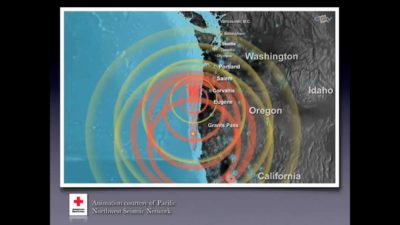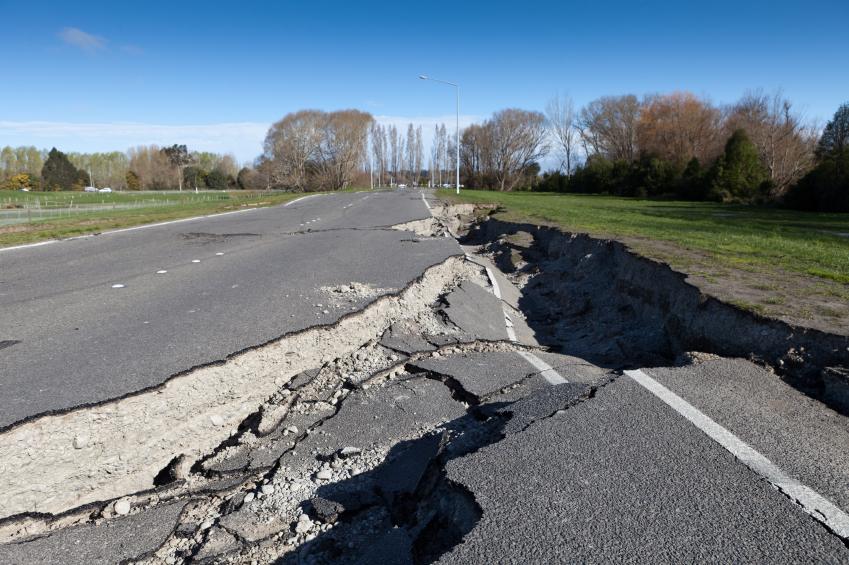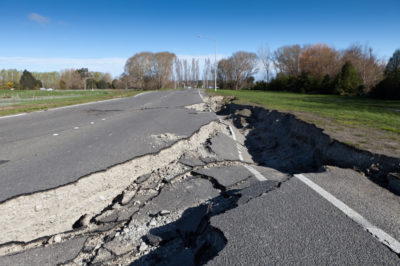Oregon scientists are warning that the state is due for a mega-earthquake that would cut off parts of the state for five years and stop power from flowing in the rest of the state for months.
While California may be the state most-often associated with earthquakes, Oregon is also situated along a major fault line, although the massive geological fault off the northwest coast of the United States has been dormant for 300 years. Scientists did not discover until the 1980s that the Cascadia subduction zone was indeed an active fault which posed a severe threat to Oregon.
The state is “like an eight-and-a-half-month pregnancy, due any time now” for a major earthquake, Althea Rizzo, geology hazard coordinator for the Oregon Office of Emergency Management, said this month.
A decade after the Cascadia subduction zone danger was realized, Oregon state building codes were altered to address the earthquake threat. In 1999 the Oregon Department of Geology and Mineral Industries created a damage and loss study to identify the statewide impact of a Cascadia Oregon earthquake or tsunami. Due to the number of tsunamis and earthquakes documented along the Cascadia subduction zone, scientists are urging Oregon officials and residents to get prepared for the “next big one.”
“A lot of you may have moved her from California to escape them, but the fact is, Oregon is earthquake country,” Rizzo said. “… It’s going to shake here. Single family homes will bounce off their foundations. Landslides will cause transportation between I-5 and [Highway] 101 on the coast to be cut off for three to five years.”
 The Oregon Seismic Safety Policy Advisory Commission prepared a February report for the Oregon legislature, showing the impact the state would receive from the “big one.” The findings were eye-opening.
The Oregon Seismic Safety Policy Advisory Commission prepared a February report for the Oregon legislature, showing the impact the state would receive from the “big one.” The findings were eye-opening.
“Available studies estimate fatalities ranging from 1,250 to more than 10,000 due to the combined effects of earthquake and tsunami, tens of thousands of buildings destroyed or damaged so extensively that they will require months to years of repair, tens of thousands of displaced households, more than $30 billion in direct and indirect economic losses (close to one-fifth of Oregon’s gross state product), and more than one million dump truck loads of debris,” the report said.
Rizzo said there is a 37 percent chance that a monster earthquake will occur in the state sometime during the next 50 years. Emergency management experts in Oregon predict such a mega quake would cripple refinery gas lines, down the electrical system, and make transportation on the interstate come to a screeching halt after overpasses and bridges collapse. All this destruction would reportedly stem from approximately two to four minutes of ground shaking and weeks of stability-stressing aftershocks.
The destruction is also expected to cause liquefaction if the ground is saturated with water, causing “causing hardware, such as sewer systems, septic lines and gas tanks, to rise up out of the earth,” the Mail Tribune newspaper reported.
Electricity in the valley would be cut off for one to three months, while power in the coastal regions would be off three to six months, according to the report to the legislature. Drinking water and sewer services would be out in the valley up to one year, and along the coast one to three years. It would take health care facilities along the coast up to three years to get back to normal, and those in the valley areas about 18 months.
Top-priority highways would take six to 12 months to repair.












